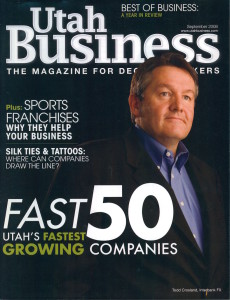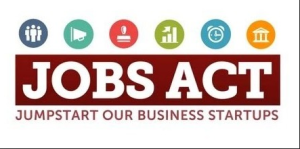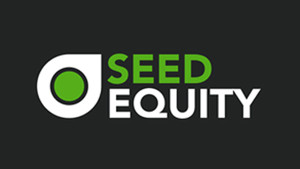
When we talk about growing businesses, we also talk about venture capital. Whether you’re raising money for your own startup or looking for options in which to invest, there are a number of venture capital trends coming up in 2016 that are worth recognizing. We are currently in the seventh year of the US equity surge, making this the longest surge since the World War II era. For this reason, we can expect some new methodologies to come about for those partaking in venture capital. Here are a few trends that we can expect to see in the landscape of venture capital in 2016.
1) An increase in the number of corporate deals
A number of corporations are investing in smaller companies in order to gain inspiration for their own innovation processes. By investing in small companies, these corporations are not only getting rewarded in terms of financial returns. They are also generating stronger suppliers, testing products for their own use, reducing the risk of innovation, and creating acquisitions that are less expensive.
In 2015, one out of five deals in the United States and Europe involved corporate venture. In Asia, corporate venture participated in one out of three deals. In 2016, founders will be continuing to study the various ways to attract and engage investors with deep pockets. This results in great competition, leading traditional financial VCs to have to work harder to stand out to entrepreneurs.
2) An increase in the investor appreciation that small funds earn
Due to the growing corporate presence within the largest deals and record startup valuations, the opportunity for big returns has somewhat decreased. The change will help to alter the world of venture capital in 2016. Before 2000, the largest ten funds received the majority of the returns, but in this is no longer the case.
In today’s venture environment, smaller funds are gaining some of the highest returns. According to a report from Cambridge Associates, the idea that most venture industry performance is generated by the top 10 firms is an unsupported and unfounded claim. If investors believe this myth, they can miss out on valuable opportunities.
3) An increase of gender and racial diversity among investors and entrepreneurs
Increased attention has been driven to the level of diversity on each investment team, and how it affects returns. Companies that are lacking female talent, for example, are suffering. As a result, the Information and Social Capital has put out The Future List, a compilation of statistics gathered from 6,000 data points on 552 senior investment professionals from 71 firms. This data used diversity to determine which investors are best prepared to benefit from future trends.
It has also been proven that gender diversity on founding teams is largely associated with top performance. Studies show that teams with female founders outperform exclusively male teams financially by 63%. There is also likely to be an increase in racial diversity among entrepreneurs. 41% of new entrepreneurs in 2015 were non-white. It is expected that in 2016, the majority of entrepreneurs seeking investments will be either non-white, female or both.
This year will be an exciting one for venture capital. We can use trends in the past to predict what will occur, but only time will tell how the landscape of venture capital will change. If you are looking to gain investors for your growing business, or even if you are looking to invest, make sure to keep these trends in mind so that you can stay informed and get a leg up on the competition.
 On May 5th Todd Crosland, the CEO of Seed Equity Ventures, launched a new venture seed fund under Seed Equity Capital Partners, LLC targeting $10 million. This fund was developed to invest in early stage technology startups and will benefit from the vetting, sourcing and due diligence process that is performed by the Seed Equity investment team. The fund is permitted to engage in public fundraising endeavors, since it was filed with the SEC under Rule 506(c). The fund has already produced three investments, including a startup that came out of Techstars London in the UK, Spatch, Inc.
On May 5th Todd Crosland, the CEO of Seed Equity Ventures, launched a new venture seed fund under Seed Equity Capital Partners, LLC targeting $10 million. This fund was developed to invest in early stage technology startups and will benefit from the vetting, sourcing and due diligence process that is performed by the Seed Equity investment team. The fund is permitted to engage in public fundraising endeavors, since it was filed with the SEC under Rule 506(c). The fund has already produced three investments, including a startup that came out of Techstars London in the UK, Spatch, Inc.
 If you’ve followed the exciting life of Kickstarter projects like the Pebble E-Paper Smartwatch or the Coolest Cooler, you might think traditional financing is a thing of the past. After all, these projects both raised more than $10 million through Kickstarter’s crowdfunding model with the help of thousands of backers.
If you’ve followed the exciting life of Kickstarter projects like the Pebble E-Paper Smartwatch or the Coolest Cooler, you might think traditional financing is a thing of the past. After all, these projects both raised more than $10 million through Kickstarter’s crowdfunding model with the help of thousands of backers. August 19th, 2014 Todd Crosland announced the official launch of his new U.S. Registered Broker-dealer, Seed Equity Ventures. Seed Equity uses an equity-based crowdfunding platform to connect startup companies with venture capital from all over the globe.
August 19th, 2014 Todd Crosland announced the official launch of his new U.S. Registered Broker-dealer, Seed Equity Ventures. Seed Equity uses an equity-based crowdfunding platform to connect startup companies with venture capital from all over the globe.